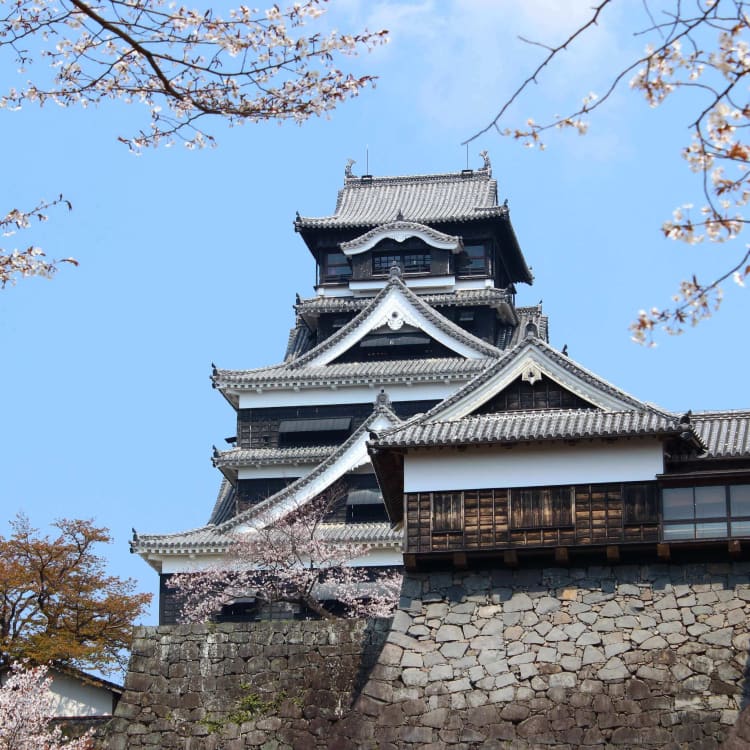
Story Sightseeing in Kyushu by JNTO on 04 January 2018
Kyushu’s rich history as a centre of Japanese civilization means that there is no shortage of historic sites to see, from ancient temples to famous castles.
Kumamoto-Jo (Kumamoto Prefecture)
Despite earthquake damage in 2016, the 500-year old Kumamoto-jo is still regarded as one of Japan’s three finest castles alongside Himeji-jo (in Hyogo) and Matsumoto-jo (in Nagano).
Currently, access is limited to selected areas while restoration takes place, with the historic Kato Shrine being a good spot for viewing the impressive donjon (main tower), which will be fully restored for the Rugby World Cup in 2019.
The castle is also one of Kyushu’s best places for sakura viewing from early- to mid-April. Home to 1,000 cherry trees, its black walls are a unique backdrop against the vibrant pink blossoms, especially around Miyuki-zaka hill which is opened to visitors specifically for the season.

Shimabara-Jo
Nagasaki Castle (or Shimabara-jo) is one of Japan’s best-preserved and most famous fortresses. Built around 1618, it’s a hirajiro (flatland castle), as opposed to a hilltop citadel, and its 33m white donjon (main tower) rises over Ariake Bay.
Built by the Matsukura Clan in 1624, the castle was far more ostentatious than its owners could afford and the heavy taxation of local peasants caused their downfall in 1637 when Lord Matsukura became the only daimyo (feudal ruler) to ever be beheaded by the Shogun.
The castle’s top floor has an observation deck from where you can see nearby Mt. Unzen, and the moat has irises that bloom in summer. The surrounding neighborhood of Teppo-machi houses Edo era (1603-1868) villas belonging to the daimyo’s former samurai.

Dazaifu Tenman-Gu
Dating back 1,100 years, Dazaifu Shrine was founded in memory of the Heian era (794-1185) bureaucrat, Sugawara no Michizane following his death in A.D. 905. He was then elevated to the status of a Shinto god, becoming Tenjin (God of Learning), making the shrine popular with students.
Dazaifu’s sites include the tobiume (flying plum tree), said to have flown there to be with him in exile, the main hall that dates back to 1591, and the Shinji Ike, a ceremonial pond named for its resemblance to the Chinese character for “heart”. You can also get Dazaifu’s famous umegae mochi (red bean) cakes here.

Kushida-jinja
Located across the Nakagawa river in the historic Hakata district, Kushida-jinja is one of Fukuoka’s most famous Shinto shrines, founded in A.D. 757 in honour of Susanoo, the Storm God.
You can drink from its ornamental well, whose water is said to bestow longevity, or attempt to lift the 100kg shiseki (trial stone), a test of strength which is traditionally lifted by visiting sumo wrestlers.
The annual Hakata Gion Yamakasa Festival (1-15th July) attracts over a million spectators, where ornate kaki-yamakasa floats participate in the Oiyama race through Hakata’s streets. The larger kazari-yamakasa float is on display at the shrine year-round. Until a century ago, Hakata was a separate entity from Fukuoka City, and the Gion Yamakasa Festival remains an intrinsic part of its distinct identity.

























































